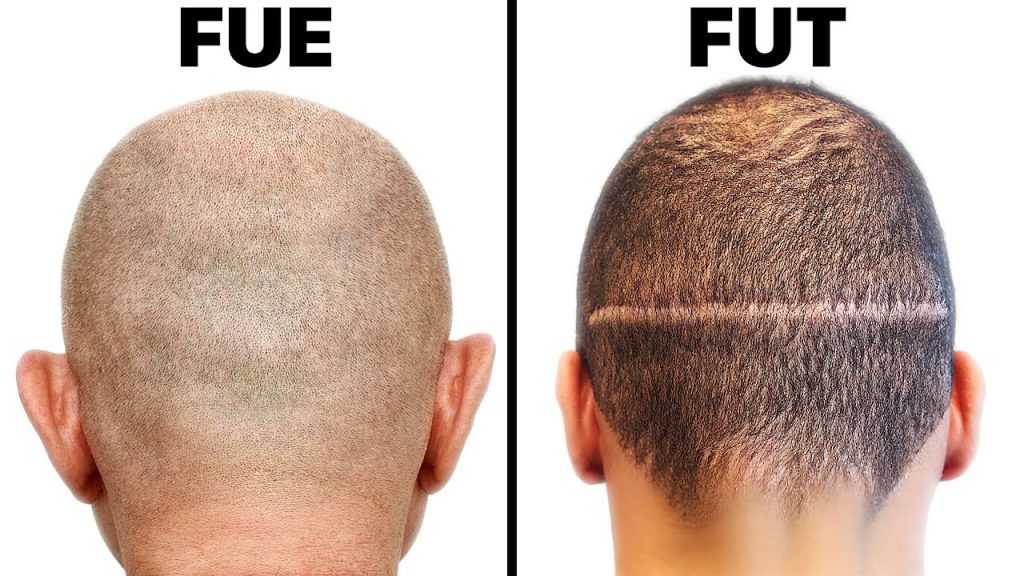
Are you also suffering from the distressing experience of hair loss? Not anymore, because now you can have the most beautiful hair and be confident again with a hair transplant.
Eventually, hair transplant is the solution to hair loss or baldness. Stop looking for solutions that are not working anymore. A professional and experienced hair transplant surgeon can guide you with the best solutions for your hair.
Different hair transplant techniques include FUE hair transplant and FUT hair transplant. Are you wonderstruck what is the difference between the two techniques and which one you should choose for yourself?
If yes, read the blog post through the end. This blog explores the difference between FUE and FUT hair transplants.
How Does Hair Transplant Work?
Before delving into the specifics of FUE and FUT, it is crucial to understand the fundamental concept of a hair transplant. Hair transplant aims to relocate hair follicles from a donor area to the recipient area. These transplanted hairs are genetically restricted to hair loss. That is, they are likely to continue growing for a lifetime. Hence giving the permanent result and regaining the lost confidence.
The success of a hair transplant largely depends on the extraction and transplantation techniques employed, which brings us to FUE and FUT.
What is FUE?
The hair transplant procedure, Follicular Unit Extraction (FUE), is more preferred. A tiny, specialised punch instrument (usually 0.8 to 1.0 mm in diameter) entail removing individual hair follicles from the donor area. The recipient area is then precisely transplanted with each graft to produce a natural hairline and density.
Advantages of FUE:
- Minimal Scarring: FUE leaves tiny, almost imperceptible, dot-like scars at the donor site, making it an excellent option for those who prefer short hairstyles.
- Quick Recovery: The healing process is relatively fast, and patients can typically resume their regular activities within a few days.
- Less Discomfort: FUE is generally associated with less post-operative discomfort than FUT.
- No Linear Scar: Unlike FUT, FUE does not leave a linear scar on the scalp.
What is FUT?
The strip method, or you can say Follicular Unit Transplantation (FUT), is another commonly used hair transplant method. This method involves the removal of a strip of skin from the donor area, typically from the back of the head. The hair follicles are dissected from this strip using a microscope and transplanted to the recipient area.
Advantages of FUT:
- High Graft Yield: FUT often yields more grafts in a single session than FUE, making it suitable for individuals requiring extensive hair restoration.
- Cost-Effective: FUT allows for the transplantation of more grafts at once, so it can be a cost-effective option for individuals with significant hair loss.
- Well-Suited for Certain Cases: FUT can be advantageous for patients with specific hair characteristics or those who have undergone multiple prior surgeries.
Difference Between FUE and FUT
Now that we have a basic understanding of both techniques let’s delve into the key differences between FUE and FUT:
1. Scarring
FUE: Leaves tiny, scattered, dot-like scars, often referred to as “white dot” scars. These are less conspicuous, particularly for individuals who keep their hair short.
FUT: Leaves a linear scar at the donor site, which can be more noticeable, especially with shorter haircuts. However, the scars can be concealed with elongated hair.
2. Recovery Time
FUE: Typically has a quicker recovery time, with patients often able to return to their normal routines within a few days.
FUT: This may require a slightly longer recovery period, as removing the strip of skin can result in some discomfort and a longer healing process.
3. Graft Quality
FUE: Grafts in FUE are individually harvested, which can be advantageous for achieving a natural-looking hairline and density.
FUT: Grafts in FUT are obtained from a strip of tissue, which may result in slightly less precise control over the angle and direction of hair growth.
4. Graft Quantity
FUE: This technique yields fewer grafts per session compared to FUT. It may require multiple sessions for extensive hair restoration.
FUT: Allows to extract a higher number of grafts in a single session, making it suitable for those with extensive hair loss.
5. Cost
FUE: Generally, FUE is more expensive on a per-graft basis due to its meticulous and time-consuming nature.
FUT: This can be more cost-effective when a larger number of grafts are needed in a single session.
FUT or FUE: Which One is Best for You?
Now that you know the basic differences between FUT and FUE hair transplant. Choosing which one will be the best suited for you depends upon various factors, such as hair loss pattern, what will be the expected results, and personal preferences.
Choose FUE If:
- You prefer short hairstyles and want to minimise the visibility of scars.
- You have a smaller area to be covered or only need a limited number of grafts.
- You are concerned about a quicker recovery time.
Choose FUT If:
- You require many in a single session.
- Budget is a major factor for you.
- You are comfortable with the linear scar, which can be hidden under longer hair.
Tip: Listening to your hair transplant surgeon’s advice is most important. As they can assess your specific needs, evaluate your donor area, and provide personalised recommendations based on their expertise.
Conclusion
FUE and FUT hair transplant techniques have unique advantages and are highly effective in addressing hair loss concerns. The choice between the two ultimately depends on individual factors, such as the extent of hair loss, desired results, and personal preferences.
Mittal Hair Clinic is the best hair transplant clinic in London, you can consult with a certified hair restoration specialist. The surgeon here will treat one patient in a day to give complete attention to every patient. They will also guide your aftercare and gives you realistic expectation before the surgery.










